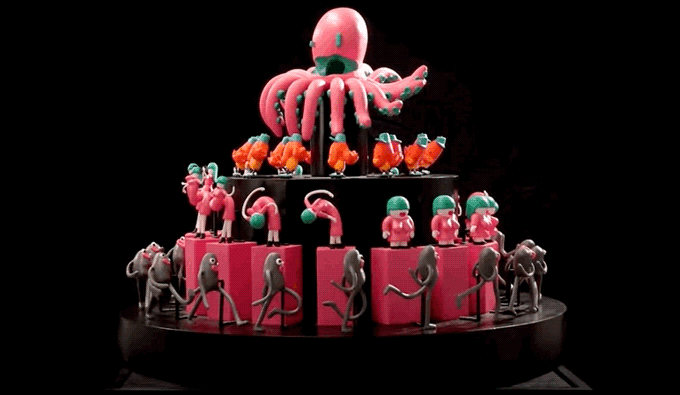
Here’s a wonderfully neat project to perhaps spark some creativity as we head into this holiday weekend: the 3D printed Zoetrope.
Take the concept of a flipbook — a series of frames displayed quickly to trick your brain into seeing an animation ��� and make it 3D, swapping out the still images for sculptures. Toss in a spinning platter and a strobe light (with the strobe flicker simulating “frames”) and bam — you’ve got a 3D zoetrope.
It’s an illusion that’s hard to capture on video, but truly incredible to see in person. It’s like seeing claymation come to life in front of your eyes.
The concept was conceived by French scientist and inventor Étienne Jules-Marey, and more recently cranked up to 11 by teams at Pixar and Studio Ghibli.
There’s a reason that the best examples of a 3D zoetrope exist as museum showcases for massive animation houses: making a proper, beautiful, complex 3D zoetrope is a labor of love, thus far requiring hundreds of sculpting/painting/engineering hours from some of the most talented animation teams in the world.
Dutch artist Klaas-Harm de Boer and the folks at Leapfrog have found a bit of a shortcut: 3D printing.
It’s still one helluva project to dive into, but it shows but one of the strange ways 3D printing expands our creative freedoms. Take a short 3D animation, break it into 64 separate frames, 3D print each one and arrange them around a platter. Tada! You’ve got your very own zoetrope.
Want more examples of how damned cool these things can be?
Here’s Pixar’s (from Disney’s California Adventure in Anaheim):
and here’s Studio Ghibli’s (from the Ghibli Museum in Mitaka, Japan):
If you get a chance to see any of these in person, I’d suggest you go however far out of your way is necessary to do so. It’s really quite incredible.